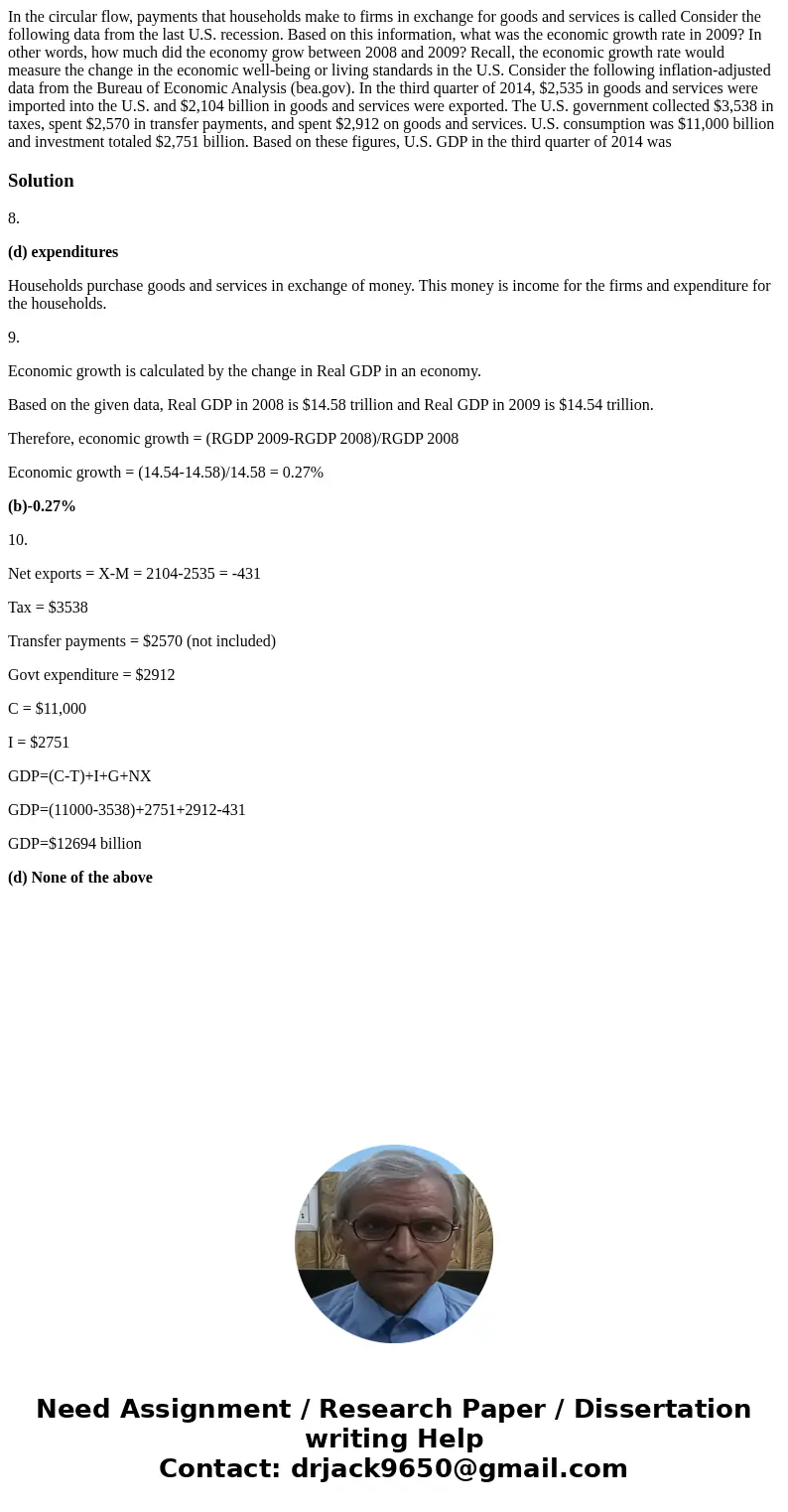In the circular flow payments that households make to firms
In the circular flow, payments that households make to firms in exchange for goods and services is called Consider the following data from the last U.S. recession. Based on this information, what was the economic growth rate in 2009? In other words, how much did the economy grow between 2008 and 2009? Recall, the economic growth rate would measure the change in the economic well-being or living standards in the U.S. Consider the following inflation-adjusted data from the Bureau of Economic Analysis (bea.gov). In the third quarter of 2014, $2,535 in goods and services were imported into the U.S. and $2,104 billion in goods and services were exported. The U.S. government collected $3,538 in taxes, spent $2,570 in transfer payments, and spent $2,912 on goods and services. U.S. consumption was $11,000 billion and investment totaled $2,751 billion. Based on these figures, U.S. GDP in the third quarter of 2014 was 
Solution
8.
(d) expenditures
Households purchase goods and services in exchange of money. This money is income for the firms and expenditure for the households.
9.
Economic growth is calculated by the change in Real GDP in an economy.
Based on the given data, Real GDP in 2008 is $14.58 trillion and Real GDP in 2009 is $14.54 trillion.
Therefore, economic growth = (RGDP 2009-RGDP 2008)/RGDP 2008
Economic growth = (14.54-14.58)/14.58 = 0.27%
(b)-0.27%
10.
Net exports = X-M = 2104-2535 = -431
Tax = $3538
Transfer payments = $2570 (not included)
Govt expenditure = $2912
C = $11,000
I = $2751
GDP=(C-T)+I+G+NX
GDP=(11000-3538)+2751+2912-431
GDP=$12694 billion
(d) None of the above

 Homework Sourse
Homework Sourse